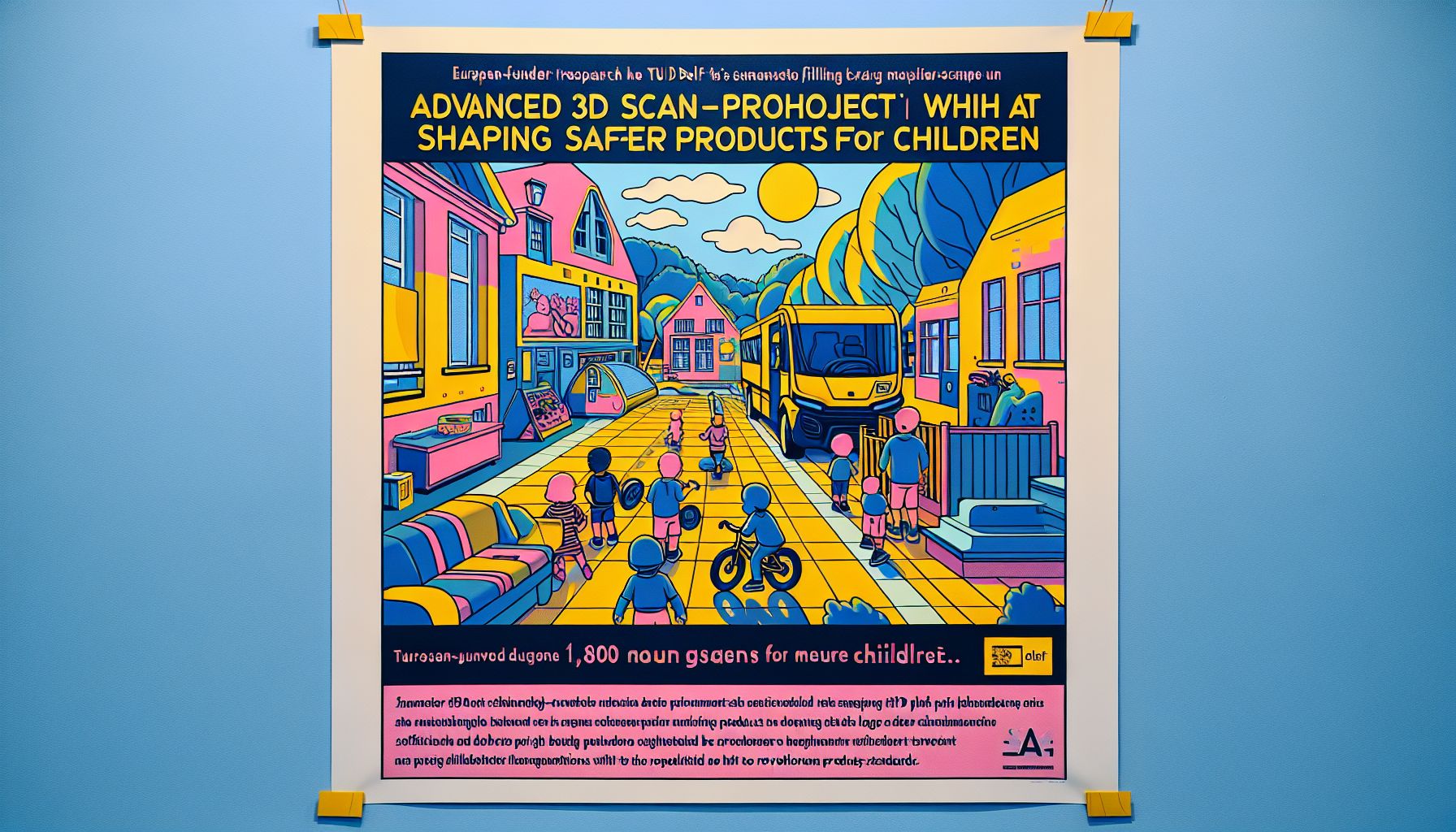TU Delft's 3D Scan Project: Shaping Safer Products for Children

Delft, Monday, 1 July 2024.
TU Delft is using advanced 3D scanning technology to measure 1,800 children, aiming to improve the design of safety products like bike helmets and life jackets. This European-funded research seeks to fill a crucial data gap in child measurements, potentially revolutionizing product safety standards.
Understanding the 3D Scanning Technology
The project at TU Delft leverages advanced 3D scanning technology to collect precise anthropometric data from children. This technology uses structured light or lasers to capture detailed 3D models of the human body, ensuring high accuracy and reliability. These 3D models provide comprehensive measurements that traditional methods might miss, such as subtle contours and shapes, which are crucial for designing products that fit well and provide optimal protection.
The Role of European Funding
The research is funded by the European Commission and commissioned by the European Standards Institute. This support underscores the importance of the project in enhancing product safety across Europe. In addition to the 1,800 children scanned at TU Delft, another 1,500 children are being scanned in Spain. Project leader Toon Huysmans notes that these scans will help identify average sizes and outliers, ensuring that safety products can be designed to accommodate a range of body types and sizes.
Practical Implications for Safety Products
One of the primary applications of this research is in the design of bike helmets. Improperly fitting helmets can lead to severe injuries in the event of an accident. By using the data from the 3D scans, manufacturers can create helmets that fit better, reducing the risk of injury. Similarly, life jackets can be redesigned to ensure they provide adequate buoyancy and comfort without compromising safety. This project aims to address these critical issues by providing manufacturers with the data they need to create safer, more effective products.
Impact on Public Safety and Design
The implications of this research extend beyond personal safety products. For instance, Huysmans highlighted an incident in 2017 where children got their fingers stuck in benches at public transport stops in The Hague. Such incidents highlight the need for better-designed public infrastructure that considers the safety of all users, especially children. The data collected from this research can be used to inform the design of safer public spaces and products, potentially preventing injuries and improving overall public safety.
Conclusion
The 3D scanning project at TU Delft represents a significant advancement in the field of healthtech, with far-reaching implications for product design and public safety. By filling crucial data gaps with precise anthropometric measurements, this research has the potential to revolutionize the standards for safety products, ensuring better protection for children across Europe. As manufacturers begin to incorporate these insights into their designs, we can expect to see a new generation of safer, more reliable products on the market.

